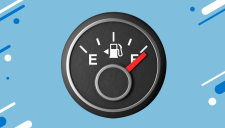Use your risk profile to your advantage

Last updated on 12th December, 2017 at 05:10 pm
Understanding your risk profile and how you are likely to react to investment movement or market uncertainty will help you stay focused and better manage your investments.
A risk profile is an evaluation of your willingness to take risks with the money you invest. It generally identifies the level of risk that you are comfortable with. Most of us fall into one of these risk profile categories:
- Ultra Conservative: highly conservative and more comfortable with investments with no risk of capital loss.
- Conservative: require a high degree of capital security and willing to accept that the real value of your investments may be eroded by inflation.
- Cautious: willing to accept a small amount of risk of losing your initial investment.
- Moderate: willing to accept a bit more risk of losing capital in exchange for better returns.
- Moderate Aggressive: prepared to take risks where this could result in higher returns.
- Aggressive: want to make as much of a return on your investment as possible, no matter the risk.
Of course, all investments carry risk, with the level of risk varying according to the type of investment. Investments considered to carry a higher risk are those that have the potential for capital losses, but also to deliver higher investment returns. Investments with lower potential investment returns generally carry lower risk levels. Because your tolerance for risk is personal and can affect the way you invest, it’s good to know what type of investor you are. It is however not the only factor you should consider when deciding how to invest. You need to balance your tolerance for taking risk with the amount of risk you can afford to take (your capacity for risk) and the amount of risk you need to take to meet your financial goals. For example, a 25-year-old with a low tolerance for financial risk may decide to invest his retirement savings in a moderately aggressive portfolio initially. The investment will have sufficient time to recover from any short-term capital loss and can gradually be moved into a portfolio with lower risk as he gets closer to retirement. The additional return that a more risky portfolio is expected to provide over the long term will increase the funds available at retirement. However, it is crucial that he keeps his long-term goal in mind when short-term market movements make him feel uncomfortable. Your goal for a specific investment will also play a role in how much risk you are willing to and can afford to take. You may for example be much more willing to take investment risk when saving for a holiday than for your retirement savings. Two factors are at play:
- The importance of the goal – it may be disappointing if you can’t afford your dream holiday, but it will have serious consequences if you can’t provide for your living expenses when you retire.
- The size of the investment relative to your total wealth – you may be quite willing to invest R10 000 in a portfolio promising high returns and risk losing it all, but will probably think very differently about investing R1-million in the same portfolio.
Remember, there is no right answer to the question of how much risk you should take. It’s a personal issue; it’s your money. Consider getting advice from a registered financial planner, because investments with too much or too little risk can be equally damaging to your ability to meet your investment objectives, but never feel pressured to take on more investment risk than you feel comfortable with.
By Helen Ueckermann
Want to learn more?
We send out regular emails packed with useful advice, ideas and tips on everything from saving and investing to budgeting and tax. If you're a Sanlam Reality member and not receiving these emails, update your contact details now.
Update Now







